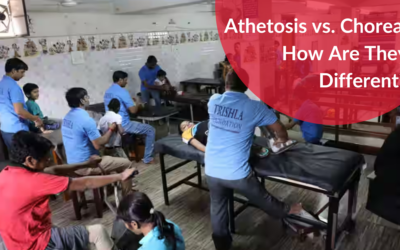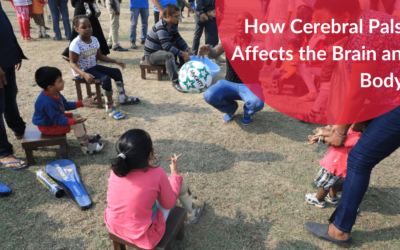Individuals who have cerebral palsy might have a combination of musculoskeletal and neurological issues. These include problem in muscle tone, balance, sensation, and abnormal movements that can challenge the patient’s walking ability. Additionally, it can result in additional wear and tear of the joints and bones over time.
Although people might have similar walking patterns, the way their muscles and joints work together can vary greatly. This is especially true in the case of people with cerebral palsy. Understanding different gait patterns is important because it will help us know what interventions can be used. Whether it is a case of athetoid cerebral palsy or any other type, doctors will need to perform a proper analysis to identify the concern.
How do you assess gait patterns?
The best way to assess gait patterns is through gait and motion analysis. Here, the main components of the study include an observational video, a thorough survey of functional status, and a musculoskeletal examination. Finally, there is also a 3-dimensional motion analysis instrumented. It is quite a complex process involving several technologies, including reflective markers, high-resolution motion tracking cameras, ground reaction force plates, electromyography, and pedo-biography.
The main aim is to check walking functions, including measuring speed, balance, muscle power, position of joint. Cerebral palsy surgery is needed to correct any bony deformities, improve joint functions, or balance the muscles.
Along with cardio-respiratory metabolic measurement systems, equipment will also measure
- Motion of body segments and joints
- Muscle activity while walking
- Movement force and power at each joint
- Pressure distribution on the feet for measuring walking energy expenditure
Common gait patterns of individuals with CP
1. Spastic hemiplegia or unilateral gait patterns
Spastic hemiplegia cerebral palsy is a result of damage to the motor cortex on one side of the brain, which is responsible for controlling voluntary movements on the opposite side of the body. In this type of cerebral palsy, there is an increased muscle tone or muscle stiffness along with spasticity on one side of the body.
Now in spastic hemiplegia, the doctors have identified four common gait patterns. These patterns build upon each other and impact muscle groups more. They increase muscle weakness and spasticity levels, which create abnormal rotation along with bone and joint deformities. So, it is essential to identify each individual’s working pattern as the management treatment and intervention will depend entirely on it.
- Type 1- Drop foot
Here, the pattern is identified or characterized by weakness or the inability of the person to lift the foot during the swing phase of gait. Treatment often involves an orthotic brace.
- Type 2- Equinus
This is the most common gait pattern characterized by toe walking. It is caused by spasticity or contractures in the calf muscles or Achilles tendons. There are also two subcategories. Depending on the case, casting can be effective for mild contractures. Meanwhile, tendon lengthening is suitable for the Achilles tendon shortening. Also, orthotics can be utilized to provide proper alignment and support.
- Type 3- Jump knee
Here, the gait pattern is marked by contractures or spasticity in the Achilles and calf muscles, which then impair ankle flexion. Child also have a flexed knee gait. This happens because of hamstring contractions. The treatment will involve orthotics. Also, muscle-tendon lengthening can be helpful if there are contracture.
- Type 4- Equinus associated with problem in hip & knee
Here, the gait pattern is characterized by contractures or spasticity in the Achilles and calf muscles, which impairs ankle flexion. This gait problem is associated with hamstring contracture, hip adduction, and internal rotation at the hip. In this case, the person will be asymmetrical on one side of the body. The treatment involves physical therapy, orthotics, botulinum toxins, and tendon, muscle-tendon lengthening and bony surgery.
2. Spastic diplegia or bilateral cerebral palsy
Now bilateral spastic diplegia cerebral palsy is a result of damage to both sides of the brain in the motor cortex that controls voluntary movements of the body’s lower limbs. Individuals with spasticity will see muscle stiffness primarily in both legs, with arms minimally impacted. This is the most common type of cerebral palsy known.
Four commonly observed types of gaits impact the working ability of people with Diplegic cerebral palsy.
- Type 1- True Equinus
This type of gait pattern is characterized by toe walking. It happens due to spasticity in the calf muscles, which causes the ankle joint to pull the heel up throughout the gait cycle with the knees and hips extended straight. Often, individuals will be able to stand on their feet flat on the floor with their knees hyperextended. Here, the treatment option involves tendon lengthening, orthotics, physical therapy. but surgery is being done in late cases.
- Type 2- Jump Knee
Jump knee is a typical gait pattern identified in individuals with diplegia, including spasticity in the hamstrings, calf muscle, and hip flexors. In this case, often, the individuals seem to have spasticity because of the reduced or delayed knee extension during the stance phase of gait. The treatment options include muscle-tendon lengthening, PT botulinum toxins, orthotics, and tendon transfer.
- Type 3- Apparent Equinus
The spasticity here involves a more normal range of motions at the angle. But here, the hip and knee are flexed through the stance phase of the pattern. It will often appear that the individual is toe walking due to excessive flexing at the hip and the knee but not due to pointing at the ankle. The treatment will involve spasticity treatments such as botulinum toxin or muscle-tendon lengthening. Orthotics can also be used.
- Type 4- Crouch gait
Here the pattern is typical in those who suffer from more significant spastic diplegia. It is recognized by excessive dorsiflexion at the ankle and excessive hip and knee bending. The treatment option for crouch gait here involves a combination of multiple approaches depending upon etiology. It include lengthening the hamstring and psoas muscle at hip, correcting problems arising with the bones, orthotic casting, and PT.
Conclusion
Management of athetoid cerebral palsy or any other form requires a lot of effort and dedication. This is why trusting only skilled professionals is extremely important. Consider scheduling an appointment with Trishla Foundation for proper assistance. Their professionals are knowledgeable and qualified for the job. They know how to develop a customized treatment plan that will work for the child’s specific needs. Depending on his case, they will offer him the proper treatment that will allow him to recover better.







